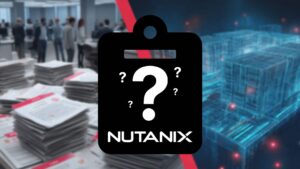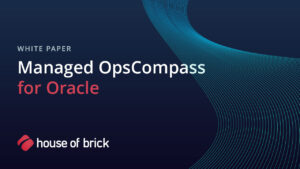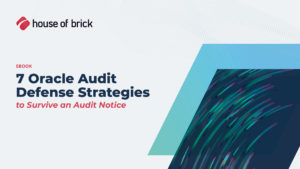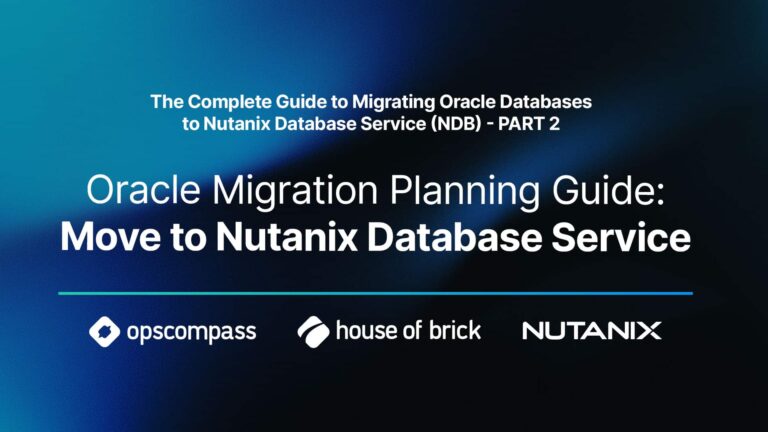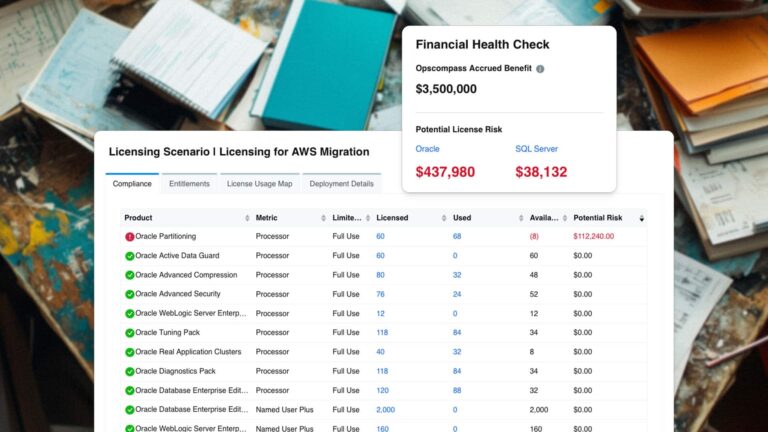Oracle audits can be costly, disruptive, and tend to arrive without much warning. If you’re managing Oracle databases across cloud and on-prem environments, preparation is key. Following a detailed Oracle Database License Audit Checklist helps identify risks early, minimize surprises, and protect your organization from non-compliance exposure.
What Is an Oracle Database License Audit Checklist? (And Why You Need One Now)
An Oracle license audit checklist is a structured process for reviewing your Oracle database deployments, entitlements, and potential compliance risks. It ensures your business is audit ready especially when you’re facing:
- Migrations to AWS, Azure, or OCI
- Virtualization with VMware, Nutanix, or HPE GreenLake
- ULA exits or contract renewals
- Mergers, acquisitions, or cloud re-platforming
Oracle’s audit process is rarely random. Licensing gaps often arise from unnoticed feature usage, virtual machine sprawl, or misunderstandings of contract terms. This checklist helps you detect and address those gaps proactively.
What Triggers an Oracle Audit? (And How to Minimize the Risk)
Common Audit Triggers
- Running Oracle on VMware or Nutanix without hard boundaries
- Using features like Partitioning or RAC without licenses
- Deploying Oracle in public cloud (AWS, Azure, OCI) without proper entitlements
- Changes to infrastructure, licensing models, or contracts
Oracle audits are often triggered by internal signals (usage telemetry, contract lapses) or external events (press releases, mergers, cloud migration activity).
Oracle’s Secret Playbook: What LMS Scripts Look For
Oracle LMS uses specialized scripts to extract:
- Option and pack usage (e.g., Partitioning, Advanced Security)
- User counts and processor metrics
- Details about virtualization and VM movement
Related: Oracle License Risks in Virtualized Environments
Oracle Database License Audit Checklist
1. Conduct a Full Oracle Inventory (Cloud + On-Prem)
- List all Oracle instances: production, dev/test, disaster recovery
- Include VMs, containers, and cloud-hosted databases
- Identify edition (Standard or Enterprise) and Oracle version (19c, 21c, etc.)
2. Validate License Entitlements
- Match deployments to licenses (NUPs, processor-based)
- Use Oracle’s core factor table to calculate required entitlements
- Check for legacy agreements, ULA status, or embedded terms
3. Analyze Feature Usage (Options & Packs)
- Use automated tools to detect RAC, Partitioning, Advanced Compression, etc.
- Ensure all enabled features are licensed or disabled
4. Review Virtualization and Cloud Deployments
- Track VM movement across hypervisors (vSphere, AHV, etc.)
- Ensure affinity rules or hard partitioning controls are documented
- Review cloud usage in IaaS platforms like AWS and Azure
5. Prepare a Clean Audit Data Package
- Validate all LMS script data before submitting
- Never run Oracle audit scripts without expert review
- Document usage decisions and controls in writing
Related: What You Need to Know About Changes to Java Licensing
Audit Negotiation Tips from Oracle Licensing Experts
Never Accept the First Finding at Face Value
Audit findings are starting points, not final truths. Oracle often overstates risk. You have every right to validate, dispute, and negotiate findings.
Use Third-Party Experts Before Sharing Data
Most audit damage occurs when customers unknowingly validate noncompliant usage. Experts can help you:
- Analyze LMS scripts
- Control scope of findings
- Push back on misinterpretations
Leverage Timing and Support Pressure
Use renewal cycles, transformation projects, or ULA exits to your advantage. Oracle wants deals closed, use that to control the conversation.
Explore: Oracle License Management Services
Tools That Help You Stay Audit-Ready All Year
Opscompass Real-Time Monitoring
- Detect unlicensed Oracle feature usage
- Alert on VM movement and hybrid license drift
- Track entitlement vs. usage metrics
House of Brick Managed Audit Defense
- Annual license position assessments
- Negotiation and audit response support
- Risk reports and future-state modeling
See How Opscompass Identifies Licensing Risks Before You Migrate
Executive Playbook: Oracle Audit Strategy for CIOs
- Align licensing compliance with business initiatives
- Understand when to buy vs. restrict usage
- Prioritize licensing health before cloud transformations
Smart CIOs view license management as a continuous, strategic process, not a last-minute scramble.
Need Help with Oracle License Audits? Talk to the Experts.
House of Brick has helped hundreds of clients successfully defend against Oracle audits, reduce license costs, and stay compliant across hybrid environments.
Let us review your Oracle footprint and help you build a defensible, cost-effective licensing strategy.
Frequently Asked Questions
A complete inventory, license entitlements, feature usage tracking, VM movement documentation, and audit response procedures.
Document deployments, validate license metrics, detect feature use, and never submit LMS data without expert review.
LMS scripts that collect usage data like users, options, and virtualization details. They must be carefully reviewed before sharing with Oracle.
You could owe significant back fees, face forced renewals, or be pushed into purchasing unneeded licenses.
Limit VM mobility, enforce licensing controls, monitor usage in real time, and document compliance strategy.
